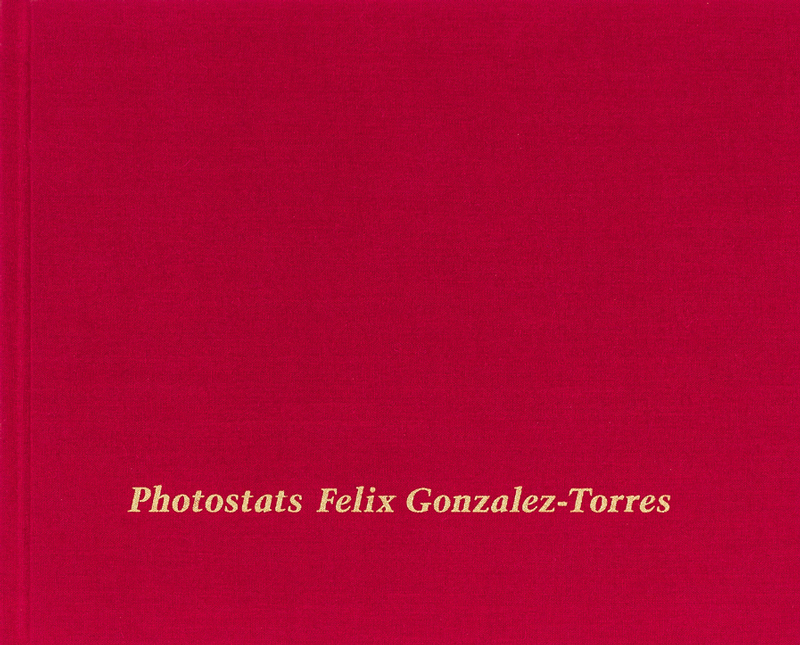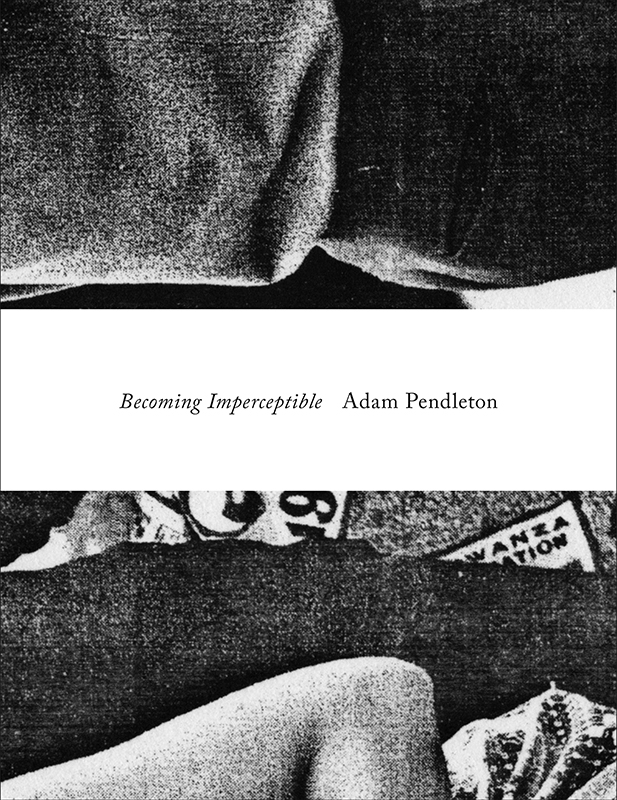Past Made PresentOn Felix Gonzalez-Torres's “Photostats”Anne K. Yoder, The Millions
reviews, 11/23/20
1.
A year ago I revisited the HBO adaptation of Tony Kushner’s Angels in America. I’m still convinced I first saw the play on a high school field trip in the mid ’90s, though I can’t find any documentation that it was staged at the University of Maryland. Still, I remember being profoundly moved by its beauty and gravity, the tragedy of so many lives lost so early, and the prevailing homophobia of the mid ’80s. But what struck me this time, when watching the miniseries, wasn’t any of these things. Instead I was floored by Al Pacino as the dying Roy Cohn, Donald Trump’s mentor and former attorney, who provides a direct political through line from McCarthyism (Cohn was Joseph McCarthy’s chief counsel) to our current political mayhem. Watching Angels in America, the foundations of Trumpism had never been more apparent.
And now, in 2020, the parallels are even more striking.
Then: the president didn’t acknowledge AIDS publicly until years into the pandemic, and only as his friend Rock Hudson died.
Now: the president refuses to acknowledge the continuing health crisis and the 225,000-plus deaths and growing.
Then: Cohn refused to publicly admit he was HIV positive and dying of AIDS, or that he was gay — instead claiming he had terminal liver disease.
Now: The Trump team’s Covid outbreak was first reported by the press. The president’s timeline from symptoms to diagnosis remains in question, with his doctors, at times, making contradictory public statements and refusing to state the date of his last negative test.
Released from Walter Reed, the president refuses to acknowledge Covid’s threat and instead tweets: “Don’t be afraid of Covid. Don’t let it dominate your life.”
Then: Cohn used his political power to access the then-experimental treatment AZT.
Now: Trump uses his political power to access the experimental treatment, Regeneron’s monoclonal antibodies.
History repeats itself, or Trump learned a lot from his mentor.
Tell it slant. Re-tell it slant.
“Do you think you might be a super-spreader, Mr. President?”
2.
When I consider Felix Gonzalez-Torres, his name conjures the tactile pleasures of my first encounter with his work at the Art Institute of Chicago, specifically its visual warmth, its physicality and playfulness. Candies are piled high in the corner of the room, which the visitor is encouraged to touch, take from, and consume—generally a forbidden pleasure for museumgoers. I recall the delight of undoing the shiny wrap, the hard, sweet candy melting in my mouth. The work is “Untitled (Portrait of Ross in L.A.),” made in 1991, the year that González-Torres’s lover Ross Laycock died of AIDS. The sweet pleasure, this melting in one’s mouth is sexual, illicit, and also a woeful replacement. The work has been assigned a target weight of 175 pounds, which is the weight of an adult male body—presumably Ross’s weight. This knowledge makes the memory of taking and eating so bittersweet.
In 1991, the year that Laycock died, Gonzalez-Torres also created a billboard, a black-and-white image of an empty bed. It’s a stark reminder of his personal mourning conjured on a public scale. How many loves were lost, and beds emptied during the AIDS epidemic?
Two years earlier he created a billboard to commemorate the 30th anniversary of the Stonewall Riots. It was mounted at the corner of Christopher Street and 7th Avenue, across the street from the historic Stonewall Inn. The billboard’s black rectangle contained two lines of white type that run across the bottom:
“People With AIDS Coalition 1985 Police Harassment 1969 Oscar Wilde 1895 Supreme Court 1986 Harvey Milk 1977 March on Washington 1987 Stonewall Rebellion 1969”
These names and dates commemorate significant moments both celebratory and tragic in the fight for gay rights and liberation. Gonzalez-Torres called this billboard “an architectural sign of being, a monument for a community that has been ‘historically invisible.’”
3.
Visibility is key for public awareness, especially during a pandemic that governmental leaders would prefer to ignore, downplay, or pass off responsibility for to someone else. It also presents the conundrum, how to commemorate an absence? Gonzalez-Torres’s “Untitled (Portrait of Ross in L.A.)” replaces the mass of his lover’s body with a pile of candy. His billboards, too, are confrontational, inviting the public to intimately gaze upon an emptied bed.
1988 is the year Felix Gonzalez-Torres made most of the photostats recently collected in the volume by Siglio Press called simply, Photostats. Their design matches that of the Stonewall billboard, only they’re vastly downsized.
1988 is the year Ross Laycock was diagnosed with AIDS. At the time testing positive was a death sentence. I’d assume Gonzalez-Torres would’ve had an awareness then that he too would likely die from AIDS-related causes.
The photostats were originally printed on photographic paper using what was effectively an early photocopy machine. The term now sounds exotic, evoking medical lexicon—”stat” being a term used ubiquitously in hospitals to reflect an acute need demanding swift attention, but also “static”—like the white text on black, like a memorial. Visually these photostats evoke another somber memorial, The Vietnam Veterans’ Memorial in Washington DC, designed by Maya Lin. There the simple, stolid black granite walls are etched with a year, followed by the names of fallen American troops. Together the individual names amass into a sea of downed men in a war that mars our history.
The paper Gonzalez-Torres uses is ephemeral, like the many lives lost to the pandemic, to the wars. It’s ephemeral, too, like our nation’s historical memory.
As Ann Lauterbach comments in her essay that accompanies this volume, “History is a noun. Is it a thing?”
In recent years especially it’s become apparent that what’s “great” in American history has been made so not by what’s happened as much as by what we’ve collectively chosen to ignore.
Photostats captivates with its bright red cover, conjuring AIDS like the red ribbons worn in the ’90s to signify solidarity with those with HIV (I wore one pinned to a bag). The title is embossed in gold and possesses an elegance and beauty suited to Gonzalez-Torres’s aesthetic. As Mónica de La Torre observes in her accompanying essay, his work, even here, is about love and infiltration, “To look closely here involves taking a deep dive into history’s ash heap, getting lost in the process, knowing there’s no one way to read the works.” There are multiple beginnings and no end: open the book on either side to the series of photostats, one series is gloss (to see the image as it’s displayed, to reflect the viewer), the other matte. Each is followed by an essay, one by de la Torre and the other by Lauterbach.
The photostat texts cite names and events that elicit and implicate the reader/viewer in a varied American and world history— that of bloodshed, protest, celebrity, glamour, oppression, and scientific prowess. Just glimpse the first page: “Patty Hearst 1975 Jaws 1975 Vietnam 1975 Watergate 1973 Bruce Lee 1973 Munich 1972 Waterbeds 1971 Jackie 1968”—and consider the commingling of history, corruption, pleasure, death, fantasy, adventure, and wealth. As de la Torre writes, “González-Torres’s inscriptions do act as constellations, as celestial alphabet.” Each page can be seen as a snapshot, read as a couplet, or a contorted haiku. What emerges are the connections a reader makes, between words and events conjured, while discerning their entanglement. There are names of fighter jets and bombs and court trials and, of course, references to the AIDS epidemic.
I don’t have to try very hard to tease out the resonances and parallels to our current pandemic.…
Continue reading at The Millions
see also
✼ @sigliopress:
Yes, for the foreseeable future, any ongoing catastrophe metaphor applies: tsunami, fire, mudslide, earthquake, aftershock. Indie publishing is never for the faint-hearted. Now, it requires superpowers. Meanwhile, I have a drugstore umbrella, knee-high wellies and a spade.
[...]

